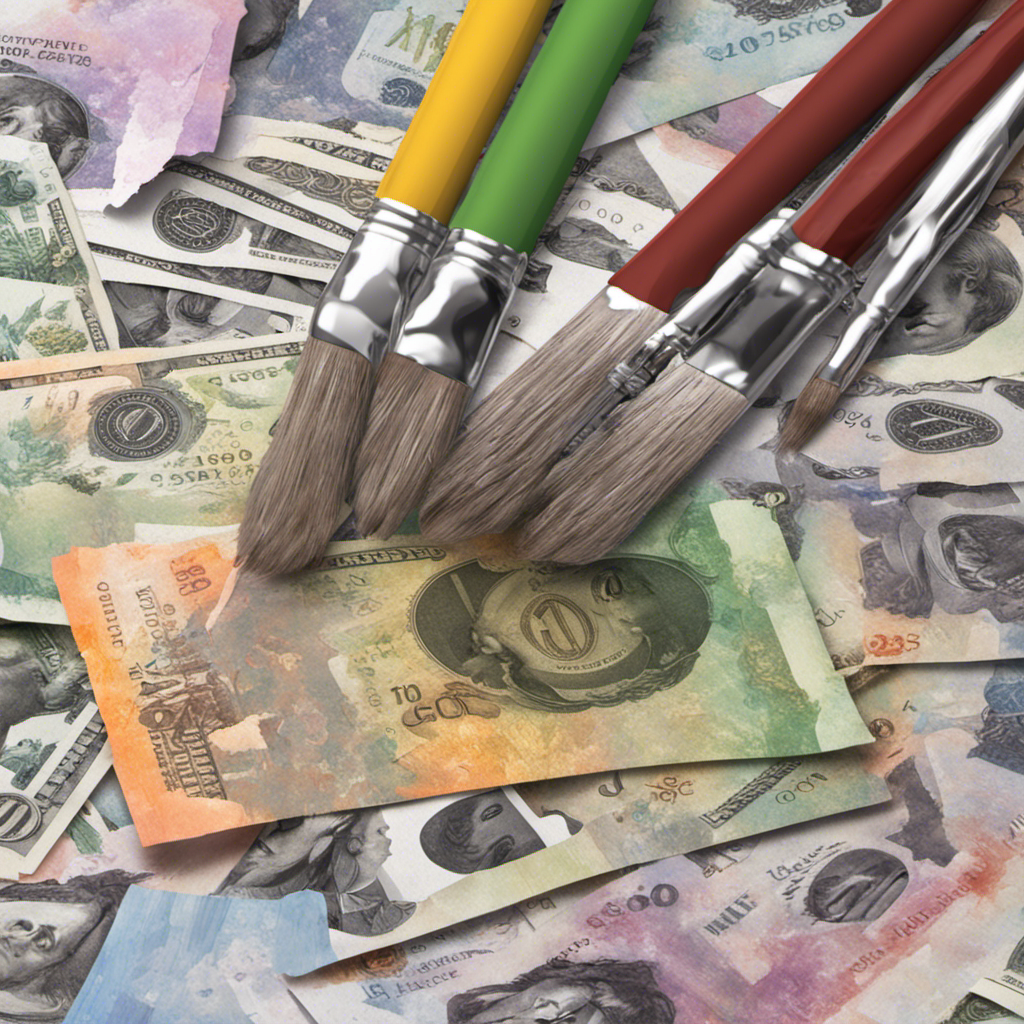
Monetize Your Creativity: Making Money from Art
In today’s highly competitive world, it can be challenging for artists to make a living solely from their creative pursuits. However, with the right strategies and mindset, artists can successfully monetize their creativity and turn their passion into a sustainable income stream. In this comprehensive blog post, we will explore various avenues through which artists can make money from their art, from traditional methods to modern digital platforms. Whether you are a painter, sculptor, photographer, or any other type of artist, this guide will provide you with valuable insights to help you thrive in the art market.
1. Selling Original Artwork
One of the most traditional and straightforward ways to make money from art is by selling your original artwork. Depending on your style and preferred medium, you can sell your creations through various channels, including galleries, art fairs, and online platforms.
Galleries: Approach local galleries that align with your artistic style and submit your portfolio for consideration. Getting your work exhibited in a gallery can help you reach a wider audience and attract potential buyers. Remember that galleries typically charge a commission fee for selling your artwork, so factor that into your pricing.
Art Fairs: Participating in art fairs can be a great opportunity to connect directly with art collectors and enthusiasts. Research art fairs in your area or consider traveling to larger events to showcase your work. Make sure to create an eye-catching booth display and bring a range of artwork at different price points to cater to different buyers.
Online Platforms: With the advent of e-commerce, artists now have access to a global marketplace. Websites like Etsy, Saatchi Art, and Artfinder allow artists to sell their artwork directly to buyers around the world. Ensure your online portfolio is visually appealing and well-crafted, accompanied by detailed descriptions and high-quality images.
2. Prints and Reproductions
While selling original artwork can be lucrative, it is often limited by the availability and pricing of the pieces. To reach a wider audience and generate additional income, many artists opt to sell prints and reproductions of their work. Prints can be created through various methods, such as digital printing, giclee printing, and screen printing.
Digital Printing: This method involves scanning or photographing your artwork and reproducing it using high-quality inkjet printers. Digital prints can be made on different types of paper or even on canvas, closely resembling the original piece. Consider limited edition prints to create a sense of exclusivity and drive demand.
Giclee Printing: Derived from the French word for “spray,” giclee printing is a sophisticated technique that uses high-resolution inkjet printers and archival inks to produce museum-quality reproductions. Giclee prints are highly sought after due to their exceptional detail, color accuracy, and longevity. This method is particularly popular among painters and photographers.
Screen Printing: Traditionally associated with the creation of posters and t-shirts, screen printing can also be used to produce art prints. This technique involves transferring ink onto a substrate through a mesh screen using a stencil. Screen printed art prints often have a unique tactile quality and can be produced in a limited edition, adding value for collectors.
3. Licensing and Merchandising
Another avenue for artists to monetize their creativity is through licensing their artwork for various commercial purposes. Licensing involves granting the rights to use your artwork on products or in marketing materials in exchange for a licensing fee or royalty.
Art Licensing: Licensing agencies and companies often seek out original artwork to be featured on products like home decor, apparel, stationery, and more. Research reputable art licensing agencies, submit your portfolio, and negotiate the terms and compensation. Licensing can provide ongoing passive income as your artwork gets reproduced and distributed on a larger scale.
Merchandising: In addition to licensing, artists can create their own merchandise featuring their artwork. Consider producing products such as prints, greeting cards, t-shirts, mugs, or phone cases with your artwork. Online platforms like Redbubble, Society6, and Zazzle provide print-on-demand services, allowing artists to upload their designs and earn a profit from each sale.
4. Art Commissions and Custom Work
Art commissions and custom work present a unique opportunity for artists to create personalized pieces for collectors, businesses, or individuals. Commissioned artwork can range from portraits and pet portraits to large-scale installations and murals.
Establishing a portfolio showcasing previous commissioned work is crucial to attract potential clients. Develop a clear pricing structure, considering factors like time, materials, and complexity of the piece. Engage with your client throughout the process, ensuring their vision aligns with your creative style.
Consider partnering with interior designers, architects, or art consultants who often work on projects that require artwork. Building relationships with professionals in these fields can lead to regular commissions and collaborations.
5. Teaching and Workshops
Sharing your knowledge and passion for art through teaching can be a fulfilling way to monetize your creativity while fostering a community of aspiring artists. There are several avenues to explore when it comes to teaching:
Art Classes: Host in-person art classes in your studio or local community center. Focus on a specific medium or technique you excel in, and create different levels of classes to cater to beginners and advanced students. Promote your classes through social media, local advertisements, and word of mouth.
Online Courses: With the popularity of e-learning, creating online art courses can expand your reach beyond geographical boundaries. Platforms like Udemy, Skillshare, and Teachable allow you to create and sell your courses to a global audience. Ensure your course content is well-structured, engaging, and supported with high-quality visual content.
Workshops and Retreats: Consider hosting workshops or retreats in picturesque locations to inspire creativity and provide a unique experience for participants. Collaborate with other artists or professionals in related fields to offer a diverse range of workshops. Promote your workshops through your website, social media platforms, and relevant event directories.
6. Grants, Fellowships, and Artist Residencies
Artists pursuing more experimental or research-oriented projects can explore various funding opportunities through grants, fellowships, and artist residencies. These programs provide financial support and often access to dedicated studio space and resources.
Research local, national, and international grant programs that align with your artistic goals and submit well-structured proposals. Pay attention to eligibility criteria, deadlines, and required documentation. Grants can provide the means to work on ambitious projects, expand your portfolio, and gain recognition.
Artist residencies offer artists the chance to live and work in a creative environment alongside other artists. Residencies vary in duration, from a few weeks to several months. They provide artists with the time and space to focus solely on their artistic practice, often resulting in a significant leap in artistic development. Explore residency opportunities relevant to your chosen medium or specific themes in your art.
Wrapping Up
Monetizing your creativity as an artist is a multifaceted journey that requires dedication, persistence, and an entrepreneurial mindset. Artists today are fortunate to have access to a wide range of platforms and opportunities to showcase and sell their art. Experiment with different strategies, adapt to market trends, and continually develop your artistic skills to succeed in the art market.
By selling original artwork, offering prints and reproductions, licensing your art, taking commissions, teaching, and exploring residency and funding opportunities, you can build a sustainable career and make a living from your art. Remember that successful monetization requires not only exceptional artistic talent but also effective marketing, networking, and business skills.
It’s time to embrace the possibilities and turn your creative passion into a thriving career!
References:
- Smith, Dan. “The Ultimate Guide to Making Money with Art.” Side Hustle Nation. Accessed 25 November 2021. Link
- Hogan, Malcolm. “8 Ways for Artists to Make Money: Tips & Advice from Pros.” Artpromotivate. Accessed 25 November 2021. Link
- Samuals, Dinah. “70+ Awesome Websites to Sell Your Art Now.” ArtWeb. Accessed 25 November 2021. Link
- “Art Licensing.” Licensing International. Accessed 25 November 2021. Link
- “The Ultimate Beginners Guide to Selling Art Online.” Printful. Accessed 25 November 2021. Link






